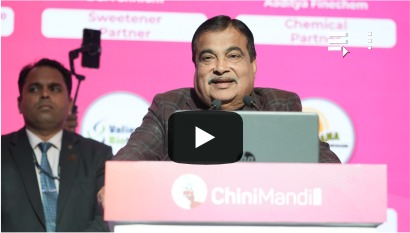Over the past five years, India’s ethanol sector has undergone a remarkable transformation. From a modest beginning to a production capacity nearing 1,700 crore litres, this growth story stands as a testament to Indian entrepreneurship and the government’s sustained policy vision. Together, they have built a strong foundation for energy security, farmer prosperity, and green growth.
The Ethanol Blending Programme – A Nation-Building Mission
The Ethanol Blending Programme (EBP) is not just a fuel policy. It’s a rural development and climate action initiative that touches every layer of the economy — from farmers and industries to the environment.
1. Economic Impact
The EBP has fundamentally reshaped India’s fuel economy. What was once an outflow of foreign exchange for crude imports is now a steady income stream for India’s farmers, turning them into “Urjadaatas” (energy providers).
Between ESY 2014–15 and ESY 2024–25 (up to July 2025):
Ethanol blending by Public Sector OMCs has saved ₹1,44,087 crore in foreign exchange.
Crude oil substitution stands at 245 lakh metric tonnes.
At 20% blending, annual farmer payments are projected at ₹40,000 crore.
Private investments continue to flow into this sector, reinforcing the vision of Atmanirbhar Bharat and driving industrial growth.
2. Social and Rural Benefits
Each ethanol distillery is a hub of rural employment. It reduces migration, creates new entrepreneurs, and links agriculture to clean energy. Farmers gain reliable markets for sugarcane, maize, surplus grains, and residues, ensuring stable income and reduced crop waste.
3. Environmental Gains
Ethanol burns cleaner, cutting CO₂ and particulate emissions by up to 50% compared to petrol.
To date, the programme has avoided 736 lakh tonnes of CO₂, equivalent to planting 30 crore trees. Beyond fuel, it promotes a circular economy, turning agricultural waste into energy and bio-fertilisers while improving soil health.
The Oversupply Challenge – A Transitional Phase, Not a Crisis
India’s success in achieving E20 blending ahead of schedule has put it among the top three ethanol producers globally. However, the current year has seen a temporary supply–demand mismatch, leading to concerns over operational sustainability and pricing.
This imbalance isn’t about feedstock choice, tendering norms, or plant location. It’s a short-term market distortion, the natural outcome of a fast-growing sector that has outpaced current blending demand.
What’s needed now is not a slowdown, but policy recalibration, measures that expand ethanol’s use and keep industry confidence intact.
From Expansion to Optimisation
India’s ethanol story has moved from the era of capacity creation to one of market optimisation. The focus now must shift to expanding ethanol’s role across sectors — from transport to power, from blending to other industrial products.
Countries like Brazil and the United States already operate at 27–30% ethanol blends, proving that higher blending is both technically viable and economically sound.
In this light, oversupply is not a failure, it’s a sign of maturity. India’s ethanol industry is now ready to integrate more deeply into the bioenergy ecosystem, far beyond petrol substitution.
IFGE Policy Recommendations
To stabilise the market and sustain long-term growth, the Indian Federation of Green Energy (IFGE) proposes the following measures:
Announce and Implement the E27 Roadmap:
Phase the blending level up to 27%, which can absorb all of current surplus capacity and align India with global leaders.
Ban Ethanol Imports for Industrial Use (Pharma, Cosmetics, etc.):
With sufficient domestic capacity, imports should be restricted to prevent market distortion and save foreign exchange, unlocking over 100 crore litres of domestic opportunity.
Ease Environment Clearance (EC) Conditions:
Allow ethanol sales beyond OMCs to private blenders, transport undertakings, and institutional consumers, ensuring liquidity and wider market access.
Fast-Track Isobutanol–Diesel Blend Approvals:
Introduce new blending options in diesel to open up additional demand channels.
Accelerate Flex-Fuel Vehicle (FFV) Rollout:
Mandate automobile manufacturers to produce E20–E85–E100 compatible vehicles at scale, securing long-term ethanol consumption and enabling clean mobility.
Conclusion
India’s ethanol journey reflects vision, innovation, and resilience. The present oversupply marks a turning point, not a crisis, but a moment to evolve from a blending-centric policy to a comprehensive bioenergy strategy.
With timely policy action, diversified markets, and continued public–private partnership, India can turn this temporary imbalance into a defining opportunity — reaffirming its position as a global bioenergy leader, uplifting rural livelihoods, and advancing its Net Zero 2070 goals.
Authored by:
Mr. Sanjay Ganjoo
Director General, Indian Federation of Green Energy (IFGE)
Mr. Amul Goel
Co-Chair, IFGE–GEDA



















Did government know how much damage done to old vehicles? who will give compensation those affected by ethanol mixed petrol?